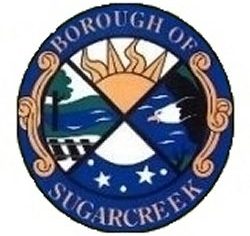With the potential for snow squalls and gusty winds in the forecast for the northwest region, the Pennsylvania Department of Transportation (PennDOT) is reminding motorists to slow down, pay attention, and use caution on area roadways.
Motorists should always be alert for sudden squalls which can strike with little or no warning and quickly cause roads to become snow covered. Heavy squalls also can cause whiteout conditions, virtually eliminating a driver’s visibility.
Additionally, falling temperatures and blowing and drifting snow can cause icy areas on roadways, including overpasses and bridges. The National Weather Service issues Snow Squall Warnings to alert motorists of potentially hazardous travel. If you receive a Snow Squall Warning, delay travel, or exit the highway at the next safe opportunity.
PennDOT is closely monitoring weather conditions and will adapt roadway maintenance strategies and plow routes as needed, including the possible implementation of Cover 90 coordination between northwest counties. Other possible precautions may be taken, such as speed limit reductions or vehicle restrictions on interstates in the northwest region.
While PennDOT recommends not traveling during winter storms, motorists can check conditions on more than 40,000 roadway miles, including color-coded winter conditions on 2,900 miles, by visiting www.511PA.com. 511PA, which is free and available 24 hours a day, provides traffic delay warnings, weather forecasts, traffic speed information and access to more than 1,000 traffic cameras.
511PA is also available through a free smartphone application for iPhone and Android devices, by calling 5-1-1, or by following regional X alerts.
Drivers should remember roadways will not be free of snow while precipitation is falling. With freezing temperatures, roads that look wet may actually be icy, and extra caution is needed when approaching bridges and highway ramps where ice can form without warning.
While avoiding or delaying unnecessary travel during winter storms is the safest choice, PennDOT offers this advice if motorists must travel and encounter snow squalls or blowing or drifting snow:
- Slow down gradually and drive at a speed that suits conditions.
- Turn on your headlights. If caught in a snow squall, turn on your hazard lights.
- Stay in your lane and increase your following distance.
- Stay alert, keep looking as far ahead as possible and be patient.
- Do not drive distracted; your full attention is required.
- Use your defroster and wipers.
- Keep windows and mirrors free of snow and ice.
- During whiteouts, come to a complete stop only when you can safely pull off the roadway.
- Do not stop in the flow of traffic since this could cause a chain-reaction collision.
- Do not pass a vehicle moving slowly or speed up to get away from a vehicle that is following too closely.
- Always buckle up and never drive impaired.
If a crash occurs due to or during a snow squall and you are involved or stopped due to the crash:
- In most cases, you are safer in your vehicle with seat belts fastened.
- If possible, drive slowly to the front of the pileup and get off travel lanes.
- If you must leave your car for an emergency, try to wait until it looks safe.
- Do not stand outside your vehicle on or near the roadway.
PennDOT reminds motorists to pack an emergency kit for their vehicles. A basic kit should include phone chargers, non-perishable food, water, blanket, small shovel and warm clothes. When preparing an emergency kit, motorists should take into account special needs of passengers such as baby food, pet supplies or medications and pack accordingly.
PennDOT also reminds citizens that downloadable materials, including home and car emergency kit checklists and emergency plan templates, are available at www.Ready.PA.gov.
For more winter driving tips and information on how PennDOT treats winter storms, visit www.PennDOT.pa.gov/winter.
